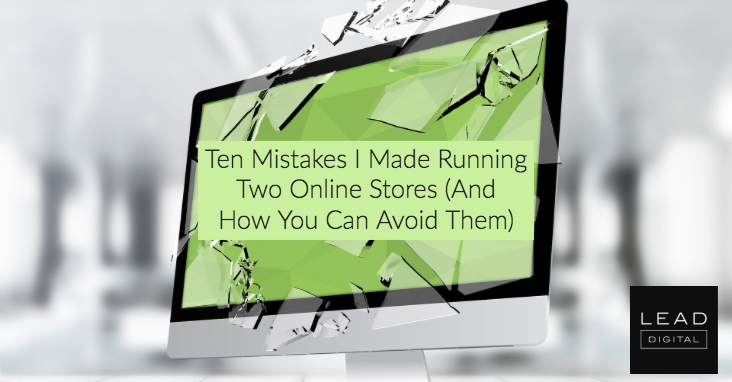 Getting into ecommerce has been one of the best educational experiences of my life.
Getting into ecommerce has been one of the best educational experiences of my life.
The things I’ve learned by actually starting a business would be challenging to find in an MBA or any business course.
With that said, the lessons I’ve learned were all born from mistakes I made. Each mistake sets you up to do better in the future as long as you reflect on what you could have done differently. I’d like to share some of my missteps with you so you can hopefully avoid them and succeed even faster.
Mistake #1: Rushing the math
If you ask any seasoned entrepreneur what the most important skill in running a business is, it’s math. When I started out, my business was like a hobby for me, so I didn’t create a detailed business plan or pay as much attention to the math as I should have.
As a result, I ended up in a niche that had good demand but not enough revenue potential to make it worthwhile. The products I was trying to sell were very cheap, and I had to sell way more than I forecasted to be able to make decent money.
Business math is very simple. To see how profitable your business can be, use this formula: Profit = Demand * (Revenue – Expenses).
To break this down, let’s assume altogether there are 20,000 people that are searching for your product (I’m using such a generous assumption to account for the main keyword, as well as some long tail keywords).
Assuming you can put yourself in front of even half of those people, that’s 10,000 potential buyers. If you convert at the average of between 1-2%, that’s 100-200 sales. If your average order value is $100, and you have a net profit margin of 30%, your profit will be anything between $3000-6000.
Of course, these are really rough estimates. But whatever you get into, if you’ve done the math, you know what you are in for. It took me two stores to learn the math lesson properly, because even though my second store had a very high average order value, the margins were so thin that I was barely making any money after factoring in costs.
Mistake #2: Not finding a gap in the market
Both stores I started were based on the dropshipping model. This meant that I was up against hundreds of people that would carry the same items that I was carrying.
Unless I could differentiate myself from them somehow, I’d just be a “me-too” store and I wouldn’t be providing any value to the situation. Not to mention you still have to compete with the likes of Amazon and Walmart.
With my first store, I just dove in, thinking it was a good niche, but without really researching any of my competitors to see what the market’s situation was. I failed to notice that the biggest player in my niche was just plain awesome. They had all the products I was carrying, hundreds of reviews, thousands of social likes, a popular blog, and tons of press coverage. They had every base in the market covered, and I still thought I could go up against them. Needless to say, the store was a disaster commercially.
With my second store, there was a big gap: not in terms of products, but in terms of information. I pounced on this opportunity and started doing my research, and managed to create a very comprehensive resource in my niche.
It’s not that the information wasn’t available elsewhere, but I presented it in a way that was easy to use and helpful for visitors. The result? With some search engine optimization (SEO) efforts, I managed to grow the store to 15,000 organic visits per month in a competitive niche.
The easiest gap to find is an information gap: you don’t need much of a financial investment, and your business’ worth will not only be that of your products and customer list, but of your content, too. – Read more



